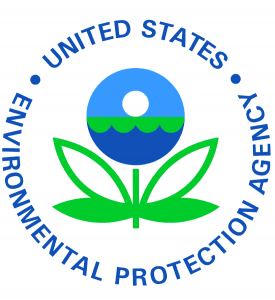A recent Executive Order by President Trump directs agencies to expedite reviews of infrastructure projects based on the emergency provisions of several key federal environmental laws. In “President’s Executive Order to Expedite Environmental Reviews of Infrastructure Pushes the Envelope on the Interpretation of Emergency Authorities,” colleagues Sheila McCafferty Harvey, Reza Zarghamee, Mona E. Dajani and Alex Peyton discuss how these emergency provisions have been seldom invoked in the past, and when they have, the purpose often has been to fast-track immediate response actions to address environmental concerns, as opposed to facilitating infrastructure projects years in the making.
Articles Posted in Environmental
2020 Oil Regulation in the United States
Co-head of Pillsbury’s Projects team, partner Robert A. James, authored the article “Oil Regulation 2020: United States,” in which he describes the key commercial aspects of the U.S. oil sector; national energy policies; major laws concerning production activities, reservoir ownership and mineral rights; environmental, health and safety regulations; and other issues affecting the oil industry.
A Court-Side Seat: Airing It Out in Weymouth, No Reasonable Exception for Mercury and “40 Pages of Very Complex Information”
Last week (June 1-7, 2020), the federal appellate courts released several important rulings.
Town of Weymouth, et al. v. Massachusetts Department of Environmental Protection
On June 3, 2020, the U.S. Court of Appeals decided the case involving the Atlantic Bridge LNG pipeline project which received FERC ‘s approval in July 2017. At issue is the proposed construction of a natural gas compression station in Weymouth, Mass. The MDEP granted the pipeline’s application and granted an air permit. Local opposition resulted in this appeal of the agency’s order. The plaintiffs argued that the DEP violated its own procedures in assessing whether an electric motor satisfied EPA’s BACT Clean Air Act requirements to control NOx emissions. The appeals court agreed that the DEP’s explanation of the cost factors was inadequate, vacated the air permit and remanded the matter to the agency for further proceedings.
A Court-Side Seat: The Fifth Circuit Tackles Groundwater, Title V of the CAA and the Bone Cave Harvestman
The Fifth Circuit released three new decisions last Friday.
On May 29, 2020. The US Court of Appeals for the Fifth Circuit released three opinions in environmental cases: Stratta, et al. v. Roe, Director of the Brazos Valley Groundwater District; Environmental Integrity Project, et al. v. EPA; and American Stewards of Liberty, et al,. v. U.S. Department of the Interior.
A Court-Side Seat: Environmental Developments on the Ninth Circuit
On May 26, 2020, the U.S. Court of Appeals for the Ninth Circuit decided three significant environmental law cases. Two of these cases involved whether global warming tort cases could be brought in California state courts on, for example, a public nuisance claim, and whether the defendant energy companies had the right to have them removed to the federal courts. Continue Reading ›
A Court-Side Seat: May Brings Federal Appellate Courts Rulings and Executive Orders
Here are a few interesting new rulings from the federal appellate courts.
COURT ORDERS
Like a Good Neighbor …? — State of Maryland v. EPA
On May 19, 2020, the D.C. Circuit decided a Clean Air Act case involving the use of the “Good Neighbor Provision” of the Act, which is triggered when one state has a complaint about emissions generated in a neighboring upwind state that settle in the downwind state. Here, Maryland and Delaware filed petitions with EPA seeking relief from the impact of emissions from coal-fired power plants that allegedly affect their states’ air quality. EPA largely denied relief, and the court largely upheld the agency’s use and interpretation of the Good Neighbor Provision. The opinion is valuable because of its clear exposition of this complicated policy.
Environmental Roundup: March – May 2020
 This is a brief account of some of the significant environment law developments that have occurred since the President’s March 13 national emergency declaration that the spread of COVID-19 poses a threat to national security.
This is a brief account of some of the significant environment law developments that have occurred since the President’s March 13 national emergency declaration that the spread of COVID-19 poses a threat to national security.
The Courts – SCOTUS
The U.S. Supreme Court has issued three important decisions affecting environmental law during this period.
Implications for Environmental Contractors in California Amidst COVID-19
The coronavirus pandemic has been credited with improved air and water quality as America shelters in place, reducing its emission and discharge footprint. This unanticipated benefit, however, overlooks the numerous environmental problems that Californians were addressing prior to the advent of the pandemic. In “California’s Stay-at-Home Orders: Implications for Environmental Contractors,” colleagues Eric Moorman and Mark E. Elliott discuss that the exceptions outlined in state and local directives likely encompass the investigatory and remedial activities performed by environmental contractors.
Will the Coronavirus Mean a Red Light for the EU’s Green Deal?
In January, the EU launched itself into the new decade with the unveiling of its Green Deal: an extensive plan of ambitious climate targets and reforms culminating in a carbon neutral Europe by 2050. There have been debates about the details of the plan particularly among the developers of carbon neutral technologies excluded from the plan. However, the emergence of the coronavirus pandemic is threatening to derail the EU’s aspiring climate change project before it’s even begun.
Texas Environmental Compliance During the COVID-19 Pandemic
Temporary environmental enforcement discretion and forbearance policies can provide relief for companies and individuals unable to comply with conditions of their permits due to the impacts of COVID-19 on their workforce and operations. In “Texas Environmental Compliance During the COVID-19 Pandemic,” colleagues Anthony B. Cavender, Sheila McCafferty Harvey, Reza Zarghamee and Amanda G. Halter discuss how environmental agencies are responding with updated compliance and enforcement policies.
 Gravel2Gavel Construction & Real Estate Law Blog
Gravel2Gavel Construction & Real Estate Law Blog


